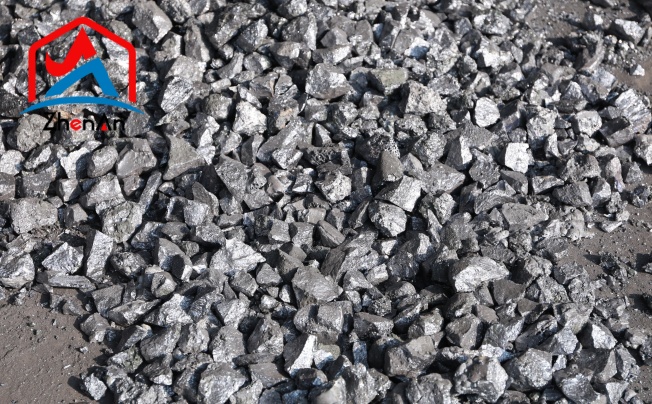Ferro Silicon, a ferroalloy composed of iron and silicon, is crucial in metallurgy and industrial applications. This alloy is renowned for its remarkable properties, where the addition of silicon to iron improves strength, hardness, and corrosion resistance.
Ferro Silicon, a ferroalloy composed of iron and silicon, is crucial in metallurgy and industrial applications. This alloy is renowned for its remarkable properties, where the addition of silicon to iron improves strength, hardness, and corrosion resistance.
Understanding the Basics of Ferro Silicon Production
Raw Materials Required
Ferro Silicon production involves the utilization of three primary raw materials: silica, coke, and iron scraps. Silica, in the form of quartz or silica sand, serves as the main source of silicon in the alloy. It is crucial for imparting the desired silicon content to Ferro Silicon.
Coke, derived from coal tar or petroleum, acts as a reducing agent in the production process by providing carbon. Iron scraps, typically sourced from recycled steel scrap or iron ore fines, contribute to the iron content necessary for Ferro Silicon production.
The Role of Each Raw Material in the Production Process
Silica plays a vital role as it provides silicon content to Ferro Silicon, which is essential for enhancing hardness and strength properties in various applications such as steelmaking and foundry operations. Coke acts as a reducing agent by reacting with oxygen during smelting to eliminate impurities and facilitate the formation of silicon alloys. Iron scraps provide additional iron content required for achieving specific alloy compositions based on customer specifications.
Chemical Reactions Involved in the Production of Ferro Silicon
The production of Ferro Silicon involves several significant chemical reactions that take place during smelting in an electric arc furnace (EAF). One crucial reaction is the reduction of silica (SiO2) by carbon (C) from coke to produce silicon (Si) and carbon monoxide gas (CO). This reaction helps in extracting silicon from silica to form the base element of Ferro Silicon alloy.
Additionally, iron oxide present in iron scraps undergoes reduction reactions with carbon to yield metallic iron necessary for alloy formation. The overall process involves a combination of oxidation and reduction reactions that transform raw materials into molten Ferro Silicon ready for refinement and solidification.
Step-by-Step Process of Making Ferro Silicon
Sorting and Cleaning Silica and Iron Scraps
Before embarking on the production of Ferro Silicon, it is crucial to ensure that the raw materials are properly sorted and cleaned. Silica, an essential component, is typically derived from quartz, which must be carefully selected and processed. The first step involves sorting through various sources of silica to obtain the purest form available.
Once obtained, the silica undergoes a meticulous cleaning process to remove any impurities or foreign substances that may negatively impact the quality of the final product. Similarly, iron scraps used in Ferro Silicon production need to be sorted and cleaned.
This involves thoroughly inspecting and segregating iron scraps based on their composition and quality. Any contaminants or unwanted materials are removed meticulously to ensure only high-quality iron is utilized in the process.
Crushing and Grinding Coke to a Fine Powder
To achieve optimal results in the production of Ferro Silicon, coke—derived from coal—is pulverized into a fine powder. This grinding process enhances the surface area of coke particles, allowing for better reactivity during subsequent stages.
The crushed coke undergoes various size reduction techniques using specialized machinery such as crushers and mills until it reaches a specific particle size suitable for smelting purposes. Achieving uniformity in particle sizes is vital as it ensures consistent combustion rates during subsequent stages while facilitating efficient heat transfer within the electric arc furnace (EAF).
Mixing Raw Materials in Proper Proportions: Achieving Desired Composition for Optimal Ferro Silicon Quality
Once all raw materials have been properly prepared, they are mixed together in precise proportions to achieve the desired composition necessary for obtaining high-quality Ferro Silicon alloy. The mixture usually consists of silica, iron scraps, and coke blended according to their respective ratios. Achieving an optimal composition requires careful consideration of several factors such as target silicon content, desired carbon levels, sulfur content limitations (if any), as well as other specified elemental requirements.
These considerations ensure that each batch adheres to strict quality standards while meeting industry-specific needs. Once precisely mixed according to predetermined recipes or formulation sheets developed by experienced metallurgists and engineers, its uniformity is confirmed through thorough sampling analysis before further processing steps commence.
Charging Mixture into an Electric Arc Furnace (EAF)
After achieving proper mixing proportions for raw material preparation, it's time to charge this mixture into an electric arc furnace (EAF). The EAF plays a pivotal role in transforming raw materials into molten Ferro Silicon alloy through intense heat generated by an electric current passing between carbon electrodes immersed within the furnace chamber. The charged mixture gradually heats up within the EAF due to electrical resistance generated by passing electricity through conductive electrodes submerged amidst solid raw materials blended inside.
As temperatures rise substantially within this controlled environment—exceeding 2000°C—the chemical reactions crucial for smelting take place. During this smelting process inside EAF chambers designed with refractory lining capable of withstanding extreme temperatures and corrosive conditions—a series of complex oxidation-reduction reactions occur simultaneously:
1) Oxidation Stage: Oxygen present within EAF reacts with carbon from coke generating carbon monoxide gas (CO) which rapidly combines with the silica present—forming gaseous silicon monoxide (SiO)—and facilitating its removal from the molten metal phase. 2) Reduction Stage: Iron oxide impurities found within iron scraps react with excess carbon present creating liquid slag enriched with FeOx compounds which then separates from the molten metal phase—a crucial step towards refining final product quality.
These intricate chemical reactions allow impurities like oxygen compounds or iron oxides introduced during preparation stages apart from desired components—silicon & residual elements—to be selectively eliminated ensuring optimal purity attainment prior alloy solidification stage.
Refining and Solidification of Ferro Silicon Alloy
Removing Impurities Through Slag Formation
When producing Ferro Silicon, it is crucial to remove impurities to ensure the desired quality and properties of the alloy. This is achieved through a process called slag formation.
Slag refers to the byproduct that forms when certain elements combine with fluxing agents during the smelting process. In the case of Ferro Silicon production, calcium oxide or limestone is commonly used as fluxing agents to facilitate slag formation.
Calcium Oxide or Limestone Addition for Slag Formation
To promote slag formation, calcium oxide (CaO) or limestone (CaCO3) is added to the mixture in the electric arc furnace (EAF). As the temperature increases within the furnace, these additives react with impurities present in the raw materials, such as silicon dioxide (SiO2) and various oxides of iron. The addition of calcium oxide or limestone helps form a molten slag layer above the metal bath.
Slag Tapping Process to Separate Impurities from Molten Metal
Once slag formation occurs, it can be tapped separately from the molten metal. The tapping process involves carefully opening a tapping hole at an appropriate height in the furnace walls to allow a controlled flow of liquid slag out of the EAF.
This allows for efficient separation and removal of impurities, which have lower melting points compared to Ferro Silicon alloy. As molten metal flows downwards due to gravity, it collects at a lower point within the furnace for further processing.
Cooling and Solidification of Molten Metal into Solid Ferro Silicon Alloy
After separating impurities through slag tapping, attention turns towards cooling and solidifying molten metal into its final form as solid Ferro Silicon alloy. The controlled cooling process prevents rapid solidification that may lead to brittleness or undesirable crystalline structure formation within the alloy.
Various methods can be employed for cooling depending on production requirements—commonly including air cooling or water quenching—to ensure consistent quality control measures are met. The refining and solidification stage represents a critical phase in producing high-quality Ferro Silicon alloy with desired properties.
By effectively forming slag layers through additives like calcium oxide or limestone, impurities are separated from molten metal during tapping operations. Careful control over cooling conditions allows for optimal solidification without compromising the overall integrity and performance attributes expected from Ferro Silicon alloys.






